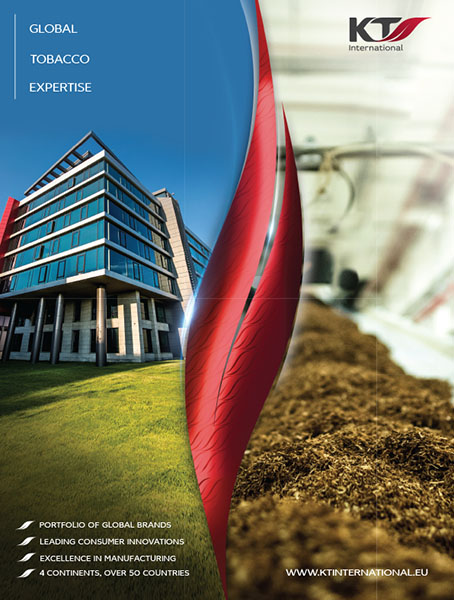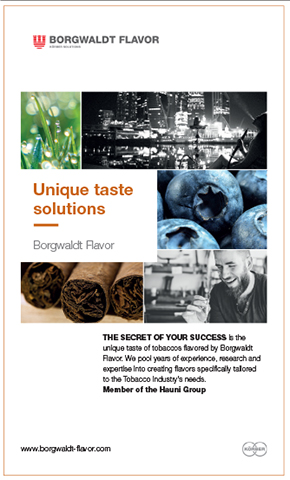Stepping Up
- Also in TR Print Edition Science
- November 1, 2021
- 0
- 3
- 12 minutes read


(Photo: Hall Analytical)
Hall Analytical is investing in reduced-risk product analysis to meet growing demand driven by innovations and regulatory requirements.
By George Gay
Hall Analytical’s sponsorship of the recent GTNF in London represented the company’s first participation in this annual conference, and Tobacco Reporter was keen to discover why it had decided to take part this year. Did its participation represent, for instance, a vote of confidence in the future of the nicotine industry?
Given the chance of an email exchange with managing director Tim Liddicoat, Tobacco Reporter started off by asking whether he believed Hall Analytical’s nicotine industry business would increase or decrease in the future.
Tim Liddicoat: We are convinced that our nicotine industry business will significantly increase in the next five years. With our investment in reduced-risk product analysis at Hall Analytical, we believe that client requirements for our analytical expertise will substantially increase in the next several years. The recent report in Research and Markets predicts the global ENDS [electronic nicotine-delivery systems] market to reach $84.43 billion in 2025, and we have the infrastructure and expertise to service this market with high-quality scientific data.
Tobacco Reporter: Why this optimism? Do you believe the nicotine industry regulatory environment will become more demanding in the future?
As the burden of proof required to prove APPH [appropriate for the protection of public health] increases incrementally in the U.S. and as European legislation develops, along with the need to support new innovations in the space, we see the analytical testing requirements becoming more demanding. This drives us to develop even more sensitive, precise, accurate and robust analytical methods.
In addition, as regulatory frameworks continue to be strengthened in established markets around the world and client demand for high-quality product characterization, emission analysis, stability and E&L [extractable and leachable] studies will only increase. The recent publication of the U.S. FDA’s final rule for the PMTA [premarket tobacco product application] pathway has established the minimum data requirements for a deemed tobacco product to enter substantive review. This certainty has been welcomed by the RRP [reduced-risk product] sector, enabling product regulatory compliance strategies to be reviewed and re-engaged. The published final rule, and limited market authorizations of tobacco-flavored ENDS to date, strongly suggest the agency’s burden of proof to demonstrate APPH is substantial. The European TPD [Tobacco Products Directive] regulatory review is imminent, and there’s every indication that a tightening of regulation around flavored ENDS products is favored by the majority of member states. This will potentially increase the requirements for analytical services from our European TPD clients.
Client requirement for our services will not only be fueled by regulatory compliance but rapid innovation in product technology with safety and user experience at the heart of new product development.
ENDS clients are also looking to emerging markets for growth, with national regulators examining established markets for guidance on appropriate regulatory frameworks. Tobacco companies traditionally focused on combustible cigarettes are rapidly diversifying their product portfolios toward reduced-risk alternatives for a sustainable business future. Growth in global markets for the next generation of nicotine-containing products will progress rapidly, and our ability to respond to clients’ needs will enable Hall Analytical to attract new business servicing the RRP sector.

Who owns Hall Analytical?
Hall Analytical is owned by Element Material Technology, a leading global provider of testing, inspection and certification services on a wide range of products, materials, processes and services for a diverse set of end markets, where failure in service is simply not an option.
Headquartered in London, U.K., Element’s scientists, engineers and technologists, working in its global network of over 200 laboratories, support customers from early R&D, through complex regulatory approvals and into production ensuring that their products, materials, processes and services are safe, compliant and fit for purpose.
Is ownership about to change?
Hall Analytical was acquired (along with VR Analytical, Crawford Scientific, Anatune and APEX Scientific) in July 2021, and ownership is not about to change again.
What, in layman’s terms, are the main methods you use and the main pieces of equipment you use, especially in respect of testing e-cigarette and heat-not-burn products and vapors?
When testing ENDS products, we focus on the analysis (testing) of the e-liquid and resultant vapor emissions, which are inhaled by the user. E-liquid testing can be more straightforward than analyzing ENDS vapor. The e-liquid samples received from clients are prepared in the laboratory and tested using analytical instruments, which employ either liquid chromatography (LC) or gas chromatography (GC) to separate the complex mixture of chemicals. The LC or GC is connected to a detector, such as a mass spectrometer, which can detect, identify and accurately quantify trace levels of chemical compounds. To unequivocally quantify trace chemicals in complex e-liquids and vapor emissions, we use tandem mass spectrometry for extremely sensitive and specific chemical detection. Trace metal quantities in e-liquid and vapor emissions are determined using a technique called inductively coupled plasma mass spectrometry.
For vapor emission analysis of both ENDS and heated-tobacco products (HTPs), we employ the same analytical instruments but need to generate vapor emissions from the test devices in a standardized procedure. To do this, we use an automated e-cigarette/HTP vaping machine specifically designed to be compliant with international testing standards. The test device emissions are generated by the machine, collected, prepared in the laboratory and then analyzed by the techniques previously discussed.
You mention above quantifying “trace chemicals in complex e-liquids.” How would you explain to a layman what complex trace analytical chemistry is?
Many chemicals can be found in complex mixtures at very low “trace” concentrations in different matrices, such as pharmaceutical products, environmental samples, physiological samples (blood, urine, etc.) and e-liquids used in e-cigarettes. Most of these trace chemicals were not detectable for many years due to limitations in analytical instruments and methods. With modern advances in instrumentation and techniques, laboratories can detect and precisely determine the amount of trace chemical present in a complex test sample.
What are the main services you offer, apart from those already mentioned?
Hall Analytical delivers industry-leading scientific expertise that supports our customers’ ability to ensure product safety. We do this in support of a number of industries: tobacco (to support both product development and regulatory submission for reduced-risk products) and pharmaceutical and medical device supply chain and manufacturers. Our main services are in support of chemical analysis of RRPs and E&L testing for all aforementioned industries.
Do you offer any services in respect of traditional tobacco products?
We have recently moved into analytical testing of HTPs but currently do not analyze traditional tobacco products.
Where is your company based?
Hall Analytical is based at a 25,000-square-foot facility in Wythenshawe, Manchester, [U.K.]. This is the only Hall site, but the wider Element organization has a global network of over 200 laboratories, some of which support reduced-risk product testing similar to that carried out at Hall Analytical.
How many people work for Hall Analytical?
Hall Analytical currently has 50 staff. There are about 200 people in the wider Element Life Sciences EMEAA [Europe, Middle East and Africa] organization split over five companies (Hall Analytical, VR Analytical, Crawford Scientific, Anatune and APEX Scientific), with the Element Material Technology business working in a global network of over 200 laboratories.
Are they mainly chemists and technicians?
Hall Analytical employees are split between the operational team, quality, science (study direction, R&D and subject matter experts, E&L specialists), commercial and supporting functions (project management, HR, HSE [health and safety], admin and IT) with the majority directly supporting our customers by delivering industry-leading scientific expertise that supports our customers’ ability to ensure product safety.
In which countries are your main customers based?
Our customer base is primarily European and North America[n], but we have customers based worldwide. Many customers are large multinational organizations, and we have supported them from Australia to South America and beyond.

Which industries provide the bulk of your business?
Tobacco companies, pharmaceutical companies, medical device organizations and their supply chain partners make up the bulk of our business.
You expressed confidence earlier, so would it be fair to say that your business is growing?
We have a strong business that is well placed for future support of all of our customers. We fully expect the business to sustainably grow in the coming years and to further expand its services and offerings in tobacco RRPs, pharmaceutical E&L and medical device E&L. We see fantastic opportunities with our acquisition by Element and will continue to work in partnership with our customers to meet their needs as their businesses develop.
Does this mean you invest significantly in the business?
In recent years, we have been well supported with significant investment in infrastructure (£2 million), instrumentation and data systems (£1 million), business leadership and our quality management system to reflect changing customer needs and maintain our commitment to state-of-the-art, high-quality analytical services.
Has your business been affected by Brexit and, if so, how?
The only impact we have had from Brexit has been with supply of chemicals from the EU. With changing REACH [Registration, Evaluation, Authorization and Restriction of Chemicals] regulations, it has become more difficult to predict which reagents and standards will be available, but we have mitigated well with increased stock of hard-to-get chemicals.
Has your business been affected by the Covid-19 pandemic and, if so, how?
Covid has impacted our business in ways that we would not have predicted. On the one hand, we saw a slowdown in the responsiveness of the FMCG [fast-moving consumer goods] markets we serve due to the restrictions of working on-site for many of our customers, but, in contrast, supporting vaccine development, ventilator production and a general acceleration of pharmaceutical and medical device projects accelerated.
Operationally, we flexed well to a hybrid work model where some activities could be done remotely, and there was little impact. We also moved facility at this time, and this was delayed a little.

